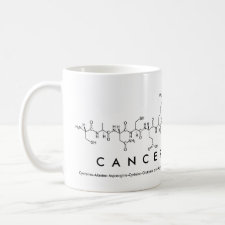
Authors: Samanidou V, Kehagia M, Kabir A, Furton KG
Article Title: Matrix molecularly imprinted mesoporous sol-gel sorbent for efficient solid-phase extraction of chloramphenicol from milk.
Publication date: 2016
Journal: Analytica Chimica Acta
Volume: 914
Page numbers: 62-74.
DOI: 10.1016/j.aca.2016.02.003
Alternative URL: http://www.sciencedirect.com/science/article/pii/S000326701630188X
Abstract: Highly selective and efficient chloramphenicol imprinted sol-gel silica based inorganic polymeric sorbent (sol-gel MIP) was synthesized via matrix imprinting approach for the extraction of chloramphenicol in milk. Chloramphenicol was used as the template molecule, 3-aminopropyltriethoxysilane (3-APTES) and triethoxyphenylsilane (TEPS) as the functional precursors, tetramethyl orthosilicate (TMOS) as the cross-linker, isopropanol as the solvent/porogen, and HCl as the sol-gel catalyst. Non-imprinted sol-gel polymer (sol-gel NIP) was synthesized under identical conditions in absence of template molecules for comparison purpose. Both synthesized materials were characterized by Scanning Electron Microscopy (SEM), Fourier Transform Infrared Spectroscopy (FT-IR) and nitrogen adsorption porosimetry, which unambiguously confirmed their significant structural and morphological differences. The synthesized MIP and NIP materials were evaluated as sorbents for molecularly imprinted solid phase extraction (MISPE) of chloramphenicol in milk. The effect of critical extraction parameters (flow rate, elution solvent, sample and eluent volume, selectivity coefficient, retention capacity) was studied in terms of retention and desorption of chloramphenicol. Competition and cross reactivity tests have proved that sol-gel MIP sorbent possesses significantly higher specific retention and enrichment capacity for chloramphenicol compared to its non-imprinted analogue. The maximum imprinting factor (IF) was found as 9.7, whereas the highest adsorption capacity of chloramphenicol by sol-gel MIP was 23 mg/g. The sol-gel MIP was found to be adequately selective towards chloramphenicol to provide the necessary minimum required performance limit (MRPL) of 0.3 μg/kg set forth by European Commission after analysis by LC-MS even without requiring time consuming solvent evaporation and sample reconstitution step, often considered as an integral part in solid phase extraction work-flow. Intra and inter-assay RSD values were less than 13% and accuracy expressed as relative recovery ranged from 85 to 106%
Template and target information: chloramphenicol
Author keywords: chloramphenicol, extraction, milk, MIP, MISPE, sample preparation, sol-gel



Join the Society for Molecular Imprinting

New items RSS feed
Sign-up for e-mail updates:
Choose between receiving an occasional newsletter or more frequent e-mail alerts.
Click here to go to the sign-up page.
Is your name elemental or peptidic? Enter your name and find out by clicking either of the buttons below!
Other products you may like:
 MIPdatabase
MIPdatabase









